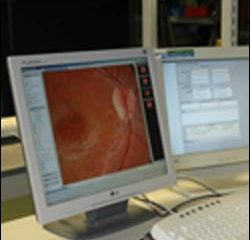Materials Sciences
Materials management deals with the research, development, manufacturing and processing of raw and industrial materials. Key aspects here are biological and medical issues, which play an increasingly important role in this field.
innovations-report offers in-depth articles related to the development and application of materials and the structure and properties of new materials.

Traditional Chinese medicine – a treatment for sperm genetic abnormalities?
Bioscientists from the University of Kent have called for clinical trials to further investigate how traditional Chinese medicine (TCM) may have a positive effect on sperm genetic abnormalities, and thereby influence the success rate of male infertility treatment.
A team led by Dr Darren Griffin, Reader in Genetics in the University’s Department of Biosciences, has already conducted research on six men who had very high levels of chromosome abnormalities in their sperm by followin

Mystery of metallic glass is cracked by Johns Hopkins engineers
Researchers discover how atoms are arranged in unusual material
Using state-of-the-art lab techniques and powerful computer simulations, Johns Hopkins researchers have discovered how atoms pack themselves in unusual materials known as metallic glasses. Their findings should help scientists better understand the atomic scale structure of this material, which is used to make sports equipment, cell phone cases, armor-piercing projectiles and other products.
The discovery,

For some, aspirin doesn’t increase risk of recurring hemorrhagic stroke
Aspirin is typically prescribed for people at risk of having an ischemic stroke to prevent blood clots. Because aspirin may cause bleeding, it is typically avoided in people who have had a hemorrhagic stroke, also called intracerebral hemorrhage. A new study, however, finds that aspirin may not increase the risk of recurrent intracerebral hemorrhage. The study is published in the January 24, 2006 issue of Neurology, the scientific journal of the American Academy of Neurology (AAN).
Rese

Digital Healthcare scores World First with Secure Telemessaging for Eye Screening
A major community eye screening programme to monitor the sight of 12,000 diabetes patients across Central Lancashire over a 12 month period has scored a world first in using secure messaging telemedicine to successfully transfer patient information between opticians, hospitals and a screening administration centre within the PCTs. The diabetic retinopathy screening programme is using OptoMize, an innovative software product combining digital images of the retina with an electronic patient adm

Virginia Tech scientists develop process for creating biocompatible fibers
Scientists at Virginia Tech have developed a single-step process for creating nonwoven fibrous mats from a small organic molecule – creating a new nanoscale material with potential applications where biocompatible materials are required, such as scaffolds for tissue growth and drug delivery.
The research will be presented in the Jan. 20 issue of Science, in the article, “Phospholipid Nonwoven Electrospun Membranes,” by Matthew G. McKee, a recent Ph.D. graduate in chemical eng

World first for silver that keeps its sparkle
British experts have pioneered the world’s first non-tarnishing sterling silver in a breakthrough that could revolutionise the silver industry.
Researchers in Sheffield, the city famous for stainless steel, have developed a ‘stainless silver’ alloy that resists the discolouring effect of pollutants and retains its bright finish.
The groundbreaking alloy, developed by researchers from Sheffield Hallam University’s Materials and Engineering Research Institute (MERI) and l